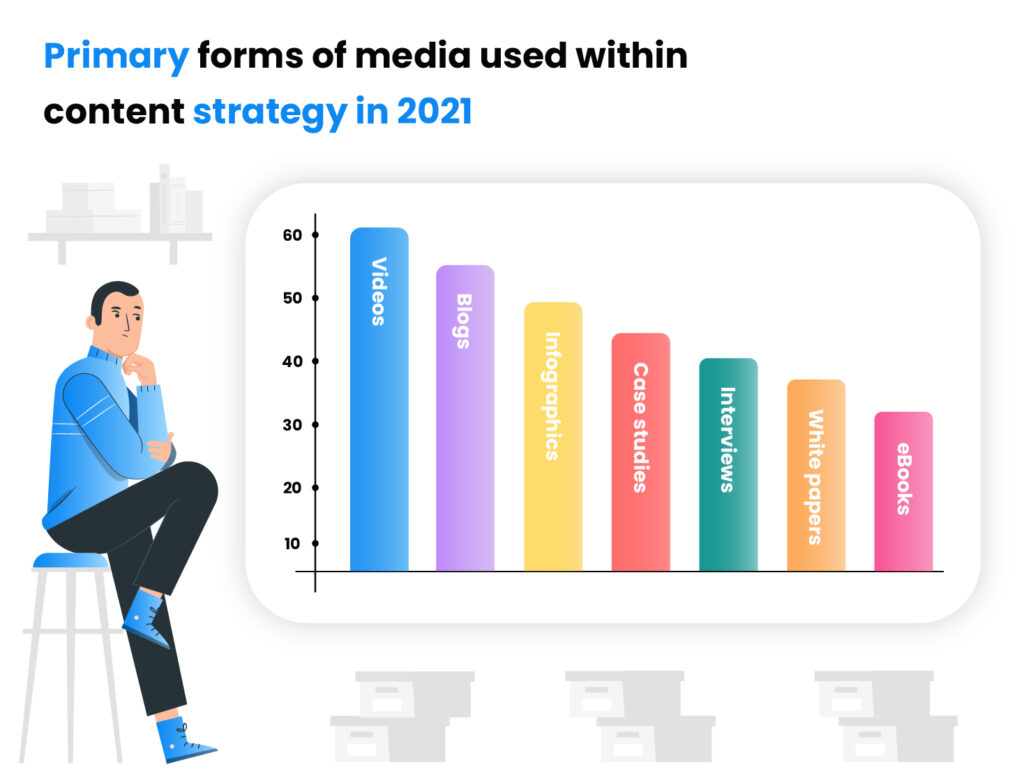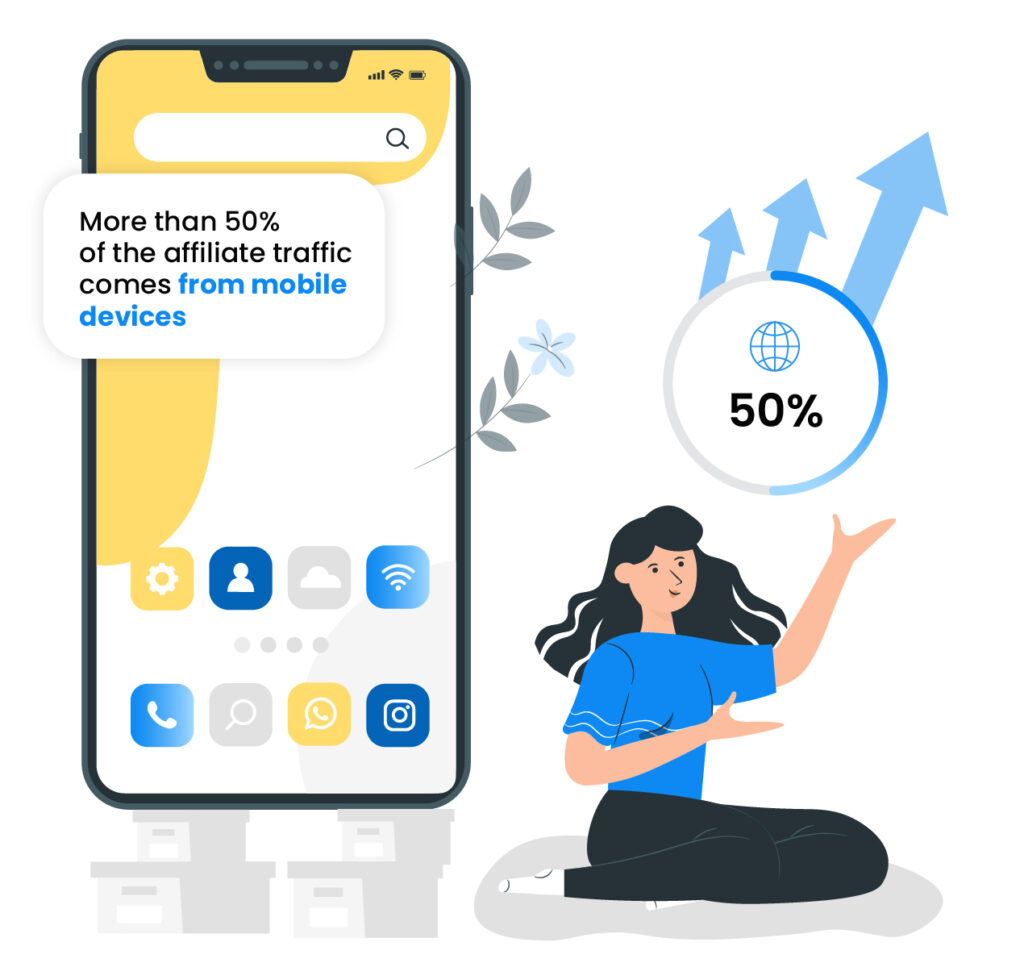Around 84% of content publishers use affiliate marketing to gain extra web traffic. At the same time, 48% of affiliate marketers are making $20k per year, while 3% earn over $150k. But it’s those 3% that inspire others to become affiliate marketers.
After all, seeing tons of articles written by “affiliate gurus” that swear to give you all the tips and tricks to “earn money while you sleep”, can give off the impression that affiliate marketing really is a piece of cake. What they don’t tell you, though, is what to do when your campaigns fall short. You’re working hard, but the conversion rate is abysmal, so what are you doing wrong?
What you need to do is look at the data you’ve collected to find a reason why your affiliate marketing campaigns are not performing as well as expected. Without enough data that can be measured and analyzed, you’re relying on luck more than hard work – and that’s not the point of affiliate marketing.
To earn enough to make your efforts worthwhile, you need the right kind of traffic, a great offer, and an easy way to convert website visitors into paying customers. As such, you shouldn’t be relying on your gut-feelings and guesstimates. You need to know what is working and what isn’t to build a foolproof affiliate strategy that brings in the desired results. And you can’t do that without tracking, gathering, and analyzing data. Because affiliate marketing trends change every day, you can’t just create a campaign and leave it.
However, we acknowledge that looking at large amounts of data without understanding it can be overwhelming. We’re here to give a helping hand – in this article, you’ll learn how you can optimize your campaign using the data you’ve gathered.
What can you optimize in your affiliate marketing campaigns?
Your affiliate marketing campaign is made up of several elements, each with a specific role. You can think of your campaign as a machine with several parts and gears. The gears are:
- Traffic
- Content
- The product/offer
- Landing page
For a successful campaign, you need all aspects to work together smoothly. Sometimes the aspects won’t mesh together well. Does this mean the whole campaign should be thrown away? No! You should check each of the parts and determine which is causing the issue.
Maybe your web traffic doesn’t consist of the people you’re trying to target. Or maybe your offer isn’t clear enough for people. Here’s where your data will come in handy. After careful analysis, you’ll be able to determine what needs to be worked on. Once you find the root of the problem, you can improve that aspect of your campaign and get better results.
Traffic to affiliate landing pages
If you want to make money through your affiliate marketing campaigns, you need web traffic from relevant audiences. You need to attract the people who are most likely to be interested in buying the products and services you’re offering. For that, you need high-quality traffic to your website.
You might think that focusing on a broader audience will give you more clicks. But what’s the point of getting a lot of traffic to your website if it doesn’t convert? If low-quality traffic is your main problem, it’s time to fine-tune your targeting. Let’s look at your current data – are there any audience segments or traffic sources from which you get the most conversions, and are there places where there are hardly any conversions? Analyzing this data can highlight areas on which you should focus on and allocate funds to.

If you are using paid traffic in your affiliation, have a look at the data coming in. Make sure you’re not overpaying for traffic that doesn’t give you enough conversions.
Content around affiliate campaigns
I have a (perhaps slightly unusual) hobby of checking out alternative medicine websites. Not because I believe in it, but because I find it fascinating how people are promoting their “ground-breaking” products. And from what I know, many people who are affiliate marketers for supplements or alternative medicine don’t bother with content at all. There’s typically one page on their website describing all the benefits of their product, plus a link to a landing page where you can buy it.
But since the website is up only for a couple of months (at most) before disappearing without a trace, building reputation and credibility isn’t important for the people running the page.
On the other hand, you should aim to keep your affiliate business running for as long as possible. So you need high-quality content tailored to your audience’s needs. Content marketing costs 62% less than ads, but it can generate as much as three times more leads (source).

However, if you can see that your content usually gets buried under tons of other articles or videos and there’s barely any engagement, you’ll need to work on the quality of your content. The most crucial point you should have in mind when creating your content is that people don’t care about long lists describing product features.
Instead, they want to know if the product can solve their problem, and how. Instead of listing all the small details of every feature, talk about the benefits of the product and how it can be used.
So, what types of content can you use for this?
- Product reviews – Share the things you do and don’t like about the product.
- Case studies – Show the achieved results after using a given affiliate product.
- Tutorials – Show your audience how you have used the product to achieve certain results.
Based on your campaign data, you can also find out what kind of content your audience likes and then create more of it.
Offers promoted by affiliate marketing
Your income is directly tied to the type of offer you have for your audience. If your product is just what your target audience needs and the offer you have for them is clear, you should be in the clear. But what if you get plenty of clicks, but no conversions?
One of the reasons could be that your affiliate marketing campaigns don’t match up with your landing pages. I once saw an ad from a major company that sells system maintenance tools. The ad said that if I clicked on the link, I could get the newest edition of their tool for free for 90 days. Sounds great, right? Once I clicked on the CTA (call to action), I found out that the “90 days for free” was only applicable if I bought an annual license – ouch. That’s not what I was expecting, simply because of the information presented in the ad.

Key takeaway? If the offer on your site differs from the one on your landing page, your customers will think your site is fishy and exit without purchasing anything.
Landing pages
The people that click on your affiliate links are only one step away from converting.
That is, as long as the landing page won’t cause them to turn away. Have you ever left a landing page just because it didn’t look trustworthy or because you couldn’t actually find the info you needed? You’re not the only one to do so.
If you see that you have a steady amount of traffic on your blog but no conversions, it’s a clear sign that something isn’t working as it should be. But what exactly?
The first thing you should check is that the landing page isn’t overwhelming your visitors with information. Is the copy on the landing page too long and detailed? Did you put several links and buttons there that are distracting for your readers? Or maybe the trial form is far too long? With people being as busy as they are nowadays, the quicker and easier you make it for people to convert, the better.
And while we’re on the topic of speed, check out how fast your landing page loads too – 47% of visitors expect a website to load in less than 2 seconds, and if it takes more than 3 seconds then 40% of users will simply abandon the site(source).
There are several smaller elements that you can analyze and improve on your landing pages too: your CTA buttons, colors, positioning, or headlines and copy. A/B testing features are especially useful for this task. With this method, you can find out which of your different CTAs or offers convert better and thus create successful campaigns.

Conclusion
The data from your affiliate campaigns is a goldmine of information. Not only can you use it to find out what works well for your business and how you can improve your campaigns, but you can also spot problematic areas. Without enough data, you’re going in ‘blind’ so to say.
However, tracking and analyzing campaign data manually is quite troublesome and time-consuming. That’s why Post Affiliate Pro has got you covered! Besides monitoring all of the metrics you might need in order to hone your affiliation skills further, it will also alert you to potential problems such as low conversion rates from your recent campaigns.
Frequently Asked Questions
How do you track affiliate marketing success?
You can track affiliate marketing success by monitoring key performance indicators such as click-through rates, conversion rates, and overall sales generated from affiliate links. Additionally, tracking the performance of individual affiliates and their promotional activities can provide insight into which partnerships are most effective. Using tracking software and analytics tools can help to measure and analyze the success of affiliate marketing efforts.
How do I optimize my affiliate links?
To optimize your affiliate links, you can do several things such as creating high-quality content that attracts your target audience, promoting your affiliate links through social media, email marketing, and other channels, and using tracking tools to analyze the performance of your affiliate links and make necessary adjustments.
How do you track affiliate marketing success?
You can track affiliate marketing success by monitoring key performance indicators such as click-through rates, conversion rates, and overall sales generated from affiliate links. Additionally, tracking the performance of individual affiliates and their promotional activities can provide insight into which partnerships are most effective. Using tracking software and analytics tools can help to measure and analyze the success of affiliate marketing efforts.
How do I optimize my affiliate links?
To optimize your affiliate links, you can do several things such as creating high-quality content that attracts your target audience, promoting your affiliate links through social media, email marketing, and other channels, and using tracking tools to analyze the performance of your affiliate links and make necessary adjustments.
Share this article
9 affiliate marketing tools that’ll help you run your affiliate program
Discover 9 essential tools to supercharge your affiliate marketing program! From visual content creation with Visme to comprehensive management with Post Affiliate Pro and audience insights via Smartlook, these tools will boost your sales and refine your strategy. Dive in to maximize your affiliate success!
How To Find Affiliates to Sell Your Products
Discover over 10 successful strategies for finding high-quality affiliates in 2024 to boost your product sales. Learn to leverage influencers, join affiliate networks, and enhance your reach through SEO and social media. Maximize revenue with transparency and ongoing monitoring in your affiliate marketing program.
The leader in Affiliate software
Post Affiliate Pro offers a comprehensive affiliate software platform to manage multiple affiliate programs with ease. Enjoy no setup fees, 24/7 customer support, and a free 1-month trial. Ideal for small and large businesses, it features precise tracking, automated workflows, and customizable tools to boost your affiliate marketing success. Try it now and streamline your affiliate operations effortlessly!
Explore Post Affiliate Pro's comprehensive Affiliate Marketing Glossary to enhance your industry knowledge with easy-to-understand definitions of essential terms. Perfect for marketers seeking to understand the fundamentals and advanced concepts, this glossary helps you master the language of affiliate marketing. Visit now to boost your expertise!
Affiliate marketing email templates
Discover expertly crafted email templates for affiliate marketing with Post Affiliate Pro. Enhance your communication by motivating, acknowledging, and engaging affiliates effectively. From terms and conditions to product launches, these templates ensure clear and consistent messaging to boost your affiliate program's success. Visit now to streamline your affiliate communication!











